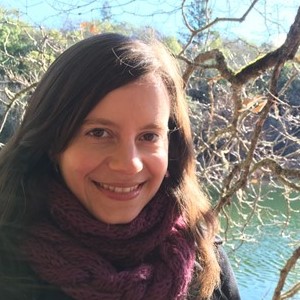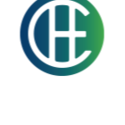We wanted to find the best young researchers and advocates who might change the future of environmental health. So, we asked a panel of luminaries in environmental health to nominate rising stars who are doing pioneering work. After a rigorous selection process, we invited 20 of these nominees to be our 20 Pioneers under 40 in Environmental Public Health.
This month, we held our first webinar in the series. In addition to these presentations, we got to sit down and learn a little bit more about the researchers. While we did talk about their research, we also learned how they first got interested in the field and what this work means to them, plus a few tips for staying healthier.
 Simona Bălan, one of our first presenters, got her start in environmental health very early. She was 11 when her aunt gave her a book about how chlorofluorocarbons (CFCs), used in aerosols and refrigerants, destroyed the ozone layer. While not typically a book that would interest an 11 year old, she found it mind-boggling and felt inspired to study chemistry diligently. As she got older, she realized chemistry alone wasn’t exactly the right path. It wasn’t until she was at Berkeley working on her PhD that she found her real passion in reducing the use of chemicals of concern in products that consumers interact with on a regular basis.
Simona Bălan, one of our first presenters, got her start in environmental health very early. She was 11 when her aunt gave her a book about how chlorofluorocarbons (CFCs), used in aerosols and refrigerants, destroyed the ozone layer. While not typically a book that would interest an 11 year old, she found it mind-boggling and felt inspired to study chemistry diligently. As she got older, she realized chemistry alone wasn’t exactly the right path. It wasn’t until she was at Berkeley working on her PhD that she found her real passion in reducing the use of chemicals of concern in products that consumers interact with on a regular basis.
While working on a project in a class for Hewlett Packard, “We were tasked with creating a way for them to prioritize chemicals in their products, that are concerns during informal recycling of electronics in third-world countries,” explains Dr. Bălan.
In doing so, she learned a lot. After graduation, she landed a job with Arlene Blum at the Green Science Policy Institute, where she got to focus even more on policy related to chemicals of concern.
With all of her work on these chemicals, she makes an effort to keep in perspective why this work is so important.
“Many of the chemicals we put in the environment are persistent, meaning they last for a very long time. Eventually, they get distributed around the world and can end up in us, or in our food. What we put out there in the environment often doesn’t go away, even though we may think it does because the environment is so big. Persistent chemicals have a way of returning to us through these environmental paths, including water, air, and food,” says Dr. Bălan.
While these chemicals are persistent, many people might think we are safe because the government or the manufactures make sure these chemicals aren’t that harmful. Well, Dr. Bălan explains that this isn’t really the case. And, that’s why her job is so important.
“Chemicals in consumer products are mostly unregulated. There is no state, national, or international agency that has the authority to regulate all the hazardous chemicals in consumer products right now. For instance, the Stockholm Convention lists 26 chemicals and groups of chemicals as persistent organic pollutants, but it’s been estimated that there are over 1,000 of those out there, many of them used in consumer products as well,” explains Dr. Bălan.
Currently, Dr. Bălan is working with the California Department of Toxic Substances Control, in the Safer Consumer Products Branch. A big part of her job is evaluating chemicals in consumer products and determining which ones are of concern. She focuses a lot on communications and “putting the reliable information that is available to us within the context of our regulatory framework, writing public documents, and summarizing the literature,” clarifies Dr. Bălan.
While all of this may make it sound like we are living in a scary world where everything we use can have a potential negative effect on our health or the environment, Dr. Bălan warns “First of all don’t panic. We are all exposed to harmful chemicals from a variety of sources. It’s pretty much unavoidable in the world we live in. But, it’s important to remember that exposure to hazardous chemicals increases your risk for developing certain conditions, but doesn’t necessarily mean you will get sick. If you add stress on top of that, you can make things worse. I think the most important thing to do to lower your risk of any disease is to take care of your self - have a good diet, get enough sleep, enough exercise, and try to lower the stress level overall in your life.”
In addition to staying healthy and trying to keep stress low, Dr. Bălan did also share a suggestion or two when it comes to selecting which products to buy.
“The most effective thing is to buy less stuff. And, I really mean that. I still remember when I was a child in Romania, as the country got wealthier one day my father told me that we are not that poor anymore to have to buy only the highest quality shoes that can last us for years. We were at the point where we could afford to buy things that break down in a few months because we could buy new ones to replace them. And, I think that is a big problem with our culture - that we are willing to buy things that we use only once, or that we throw away after a few days or weeks or months.
“So, I always try to think about that and to ask myself when I purchase something, do I really need it. I tend to buy higher quality things that will last me longer whenever possible,” says Dr. Bălan.
This is hard to remember in our consumer driven society, but it makes sense. The fewer items you bring into your home, the fewer the chances that you are introducing these chemicals of concern into your home.
She also suggests making an effort to keep your home clean and free from environmental dust.
“I know I hated it when I was a child and my mom wanted me to dust every week, but she really was on to something. Dusting with a wet cloth and vacuuming with a HEPA filter are all helpful for reducing our exposure to dust. There are dozens of potentially hazardous chemicals that have been found to attach to dust particles that we can ingest or breathe in. Washing our hand frequently before eating or touching our mouths can help reduce exposure as well,” advises Dr. Bălan.
These small behavioral changes can have a big impact on reducing a person’s potential exposure to hazardous chemicals. In addition to these behavior changes, policy changes that affect what chemicals can be added to products and in which situations, help make a big step towards lessening how often people and the environment are exposed to hazardous chemicals.
“We really only have one planet. And, we already know that there are a lot of issues with environmental pollution. While we cannot control how the planet was handed over to us, we can control how we pass it on to the next generation. I think that our current consumption patterns in the industrial world are inconsistent with environmental health. And, that we as a society need to change our mindset from considering consumer products as disposable to recognizing that even things we use once may impact environmental health for decades or centuries. It really is up to young people to make that shift,” said Dr. Bălan.
Moving forward, some recommendations from Dr. Bălan are:
- Think before you buy. Do you really need the item, or can you get something similar that you can use longer?
- Look up products before you buy them. Look for ones that are marked biodegradable, include the EPA safer choice label, or have high ratings on sites like the EWG Skin Deep Database or GoodGuide.
- Dust with a wet rag at least once a week and vacuum with a HEPA filter.
Know what is going on in your neighborhood in terms of chemical regulation. Join mailing lists for local environmental protection chapters and attend meetings when you can, to provide support and feedback.

